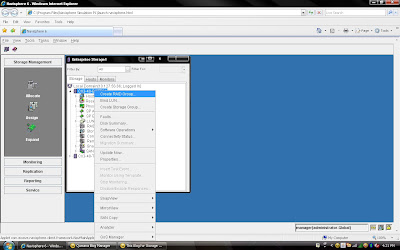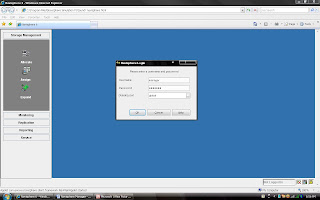We have storage array product from different vendor. Everyone talkes about active-active and active-passive device technology. With different types of storage arrays and host connection types, it is important to understand the difference between active-active and active-passive devices. Here is short explanation of the differences:Active-active (for example, Symmetrix arrays)In an active-active storage system, if there are multiple interfaces to a logical device, they all provide equal access to the logical device. Active-active...
What is “Tier 0” in Storage Environments?
Tier "0" is not new in storage market but for implementation purposes it has been difficult to accommodate because it requires best performance and lowest latency. Enterprise Flash disks (Solid State Disks) capable to meet this requirement. It is possible to get more performance for company most critical applications. The performance can be gained through using Flash drives supported in VMAX and DMX-4 systems. Read More →
Showing posts with label CLARiiON. Show all posts
Showing posts with label CLARiiON. Show all posts
If you have a multihomed host and are running like :· IBM AIX,· HP-UX,· Linux,· Solaris,· VMware ESX Server (2.5.0 or later), or· Microsoft Windowsyou must create a parameter file for Navisphere Agent, named agentID.txtAbout the agentID.txt file:This file, agentID.txt (case sensitive), ensures that the Navisphere Agent binds to the correct HBA/NIC for registration and therefore registers the host with the correct storage system. The agentID.txt file must contain the following two lines:Line1: Fully-qualified hostname of the...

CLARiiON Lab Exercise-IIOnce again welcome to CLARiiON Lab Exercise II. Today I will be demonstrating about RAID Group creation and LUN binding on CX Frame. we have understand the storage allocation using Allocation Wizard। But some times host is not registered on HBA is not logged in। Then you can not run the storage allocation wizard. It will fail to allocate storage. Then you need to do step by step. So, First step is create RAID Group...

I am going to demonstrate full LAB exercise of CLARiiON. If anybody interested to any specific LAB exercise please send me mail I will try to help and give LAB exercise. There are many exercise like:1) Create RAID Group2) Bind the LUN 3) Create Storage Group4) Register the Host5) Present LUN to Host6) Create Meta LUN etc.I will try to cover all the exercise including if you need anything extra exercise. Very Easy way to allocate the storage...

Here we are looking at only three possible ways in which a host can be attached to a Clariion. From talking with customers in class, these seem to be the three most common ways in which the hosts are attached.The key points to the slide are:1. The LUN, the disk space that is created on the Clariion, that will eventually be assigned to the host, is owned by one of the Storage Processors, not both.2. The host needs to be physically connected...

The purpose of a MetaLUN is that a Clariion can grow the size of a LUN on the ‘fly’. Let’s say that a host is running out of space on a LUN. From Navisphere, we can “Expand” a LUN by adding more LUNs to the LUN that the host has access to. To the host, we are not adding more LUNs. All the host is going to see is that the LUN has grown in size. We will explain later how to make space available to the host.There are two types of MetaLUNs,...
A metaLUN is a type of LUN whose maximum capacity can be the combined capacities of all the LUNs that compose it. The metaLUN feature lets you dynamically expand the capacity of a single LUN (base LUN) into a larger unit called a metaLUN. You do this by adding LUNs to the base LUN. You can also add LUNs to a metaLUN to further increase its capacity. Like a LUN, a metaLUN can belong to a Storage Group, and can participate in SnapView, MirrorView and SAN copy sessions. MetaLUNs are supported only on CX-Series storage systems.A...
About Me

- Diwakar
- Sr. Solutions Architect; Expertise: - Cloud Design & Architect - Data Center Consolidation - DC/Storage Virtualization - Technology Refresh - Data Migration - SAN Refresh - Data Center Architecture More info:- diwakar@emcstorageinfo.com
Blog Disclaimer: “The opinions expressed here are my personal opinions. Content published here is not read or approved in advance by EMC and does not necessarily reflect the views and opinions of EMC.”


